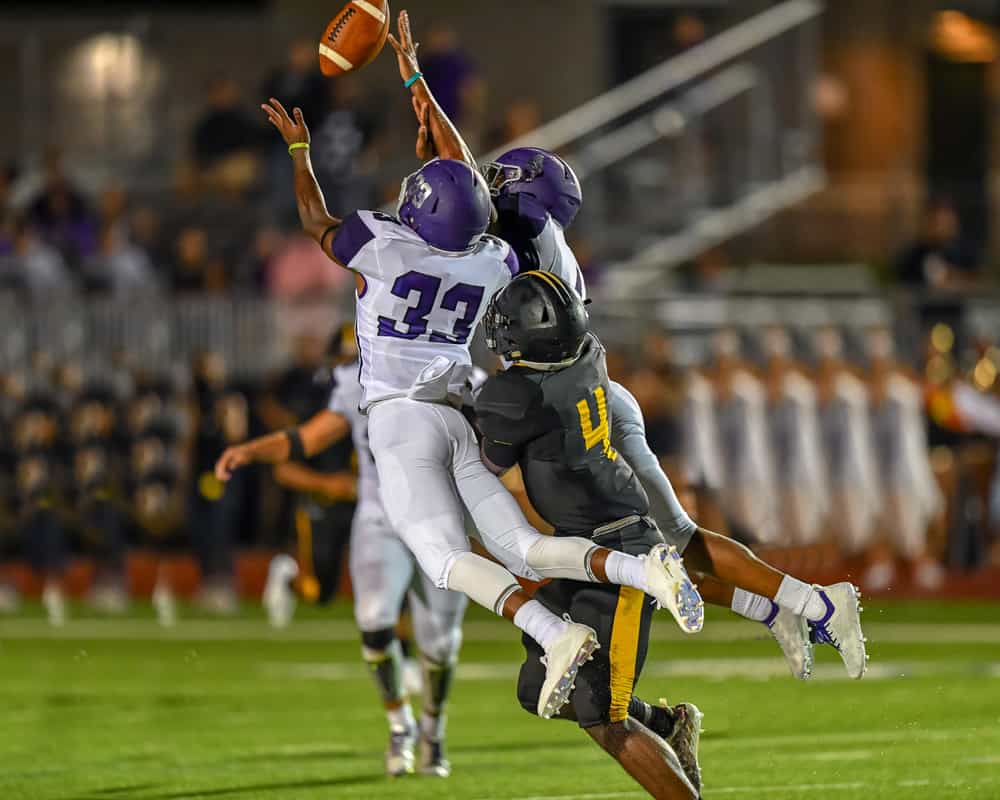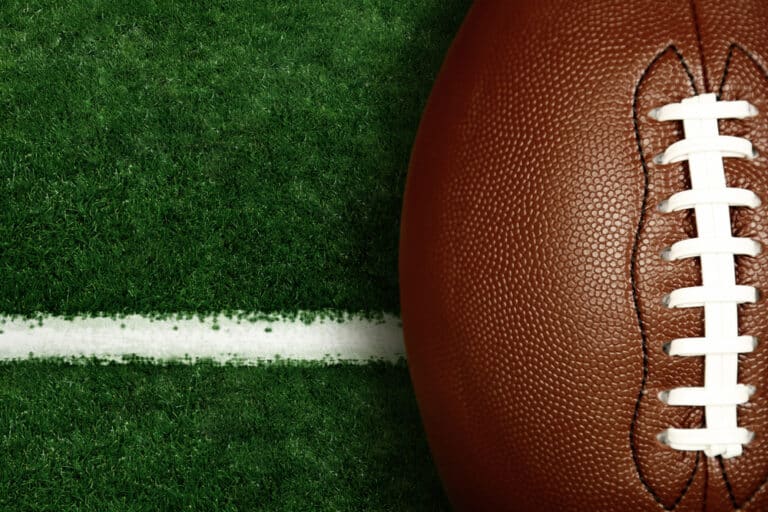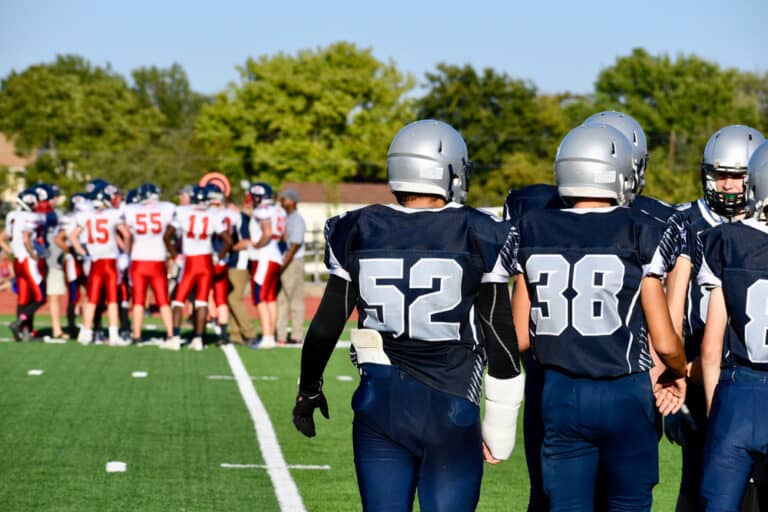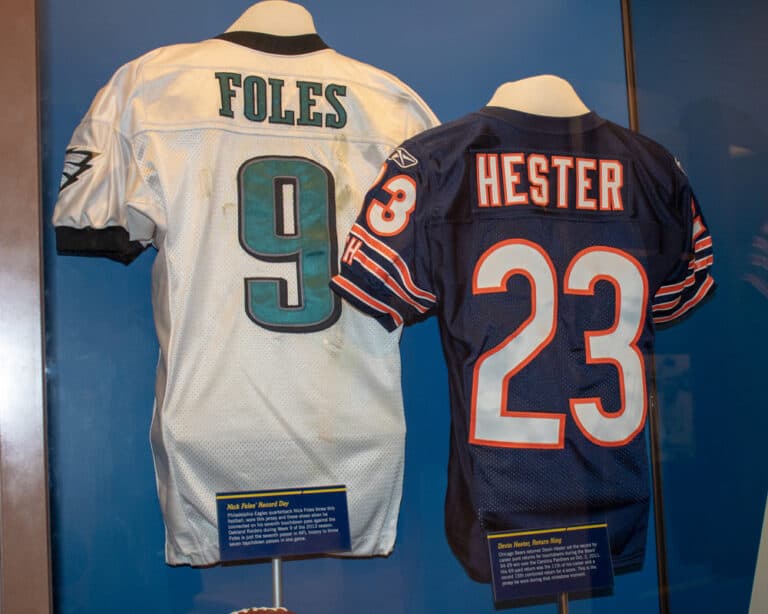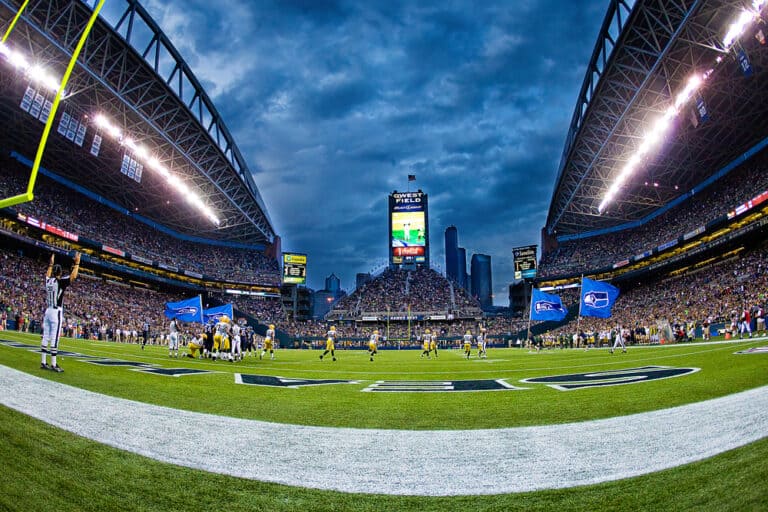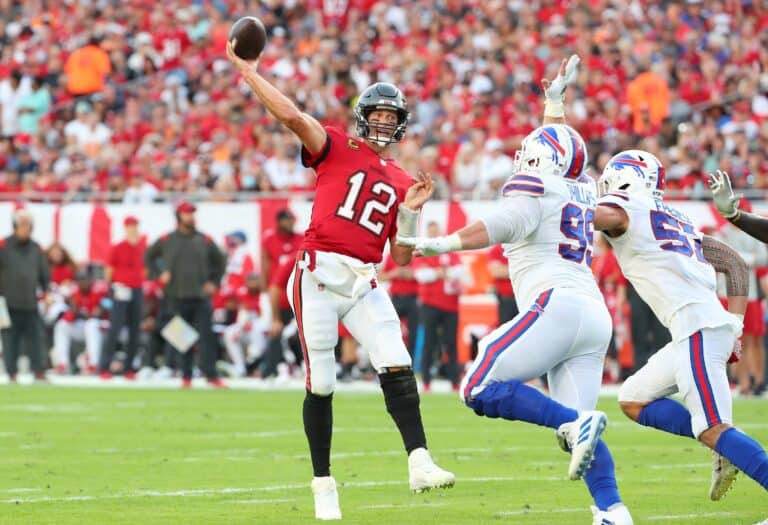Is A Blocked Field Goal A Live Ball? (All You Need To Know)
Watching a football game, you may see a rare event where the defense blocks the field goal attempt. The ball may be tipped up into the air by a defender, or it could even be caught if the kick comes up short- but is a blocked field goal ball live?
A blocked field goal is a live ball, and the offense and defense can score a touchdown should they move the ball to the opposition’s end zone. For the ball to be live after being blocked on a field goal, it has to land or be caught or collected between the line of scrimmage and the goal line.
Several possible results can occur due to a blocked field goal, so let’s get on the field and find out what the offense could do and what the defense could do, and which type of blocked field goal result is the rarest in football.
Why Is A Blocked Field Goal A Live Ball
Once the snap is made, the ball is live, and it will remain live until it either goes out of bounds or the referees call the play dead under normal rules. If the field goal is blocked and the ball lands between the line of scrimmage and the goal line, it is live under the rules.
However, if it is blocked and rolls out of bounds, over the dead ball line, or the goal line, the play is over, the offense with forfeit the possession, and the defense will take over as per normal playing rules.
Can The Offense Get A New Set Of Downs On A Blocked Field Goal Ball
If the field goal attempt is blocked, the ball lands behind the line of scrimmage, and the offense recovers the ball, they still have the opportunity to receive a new set of downs, provided they make the yardage on the play to achieve sufficient yardage gain.
For example, offense Team A attempts a field goal on 4th and five from the 40-yard line. The goal is blocked, but the offense recovers the ball, and the ball carrier makes it to the 20-yard line before being tackled.
This would be a gain of 20 yards, the offense would be awarded a new set of four downs, and the game would continue.
If the offense could not penetrate beyond the 40-yard line or the 35-yard line, they would forfeit possession, and the defense would start from their 40-yard line or where the referees have called the ball down.
Remember that this only applies if the field goal is blocked. If the kick is missed, whether it’s a field goal or extra-point conversion, the ball is dead, and the offense forfeits possession regardless of the down count.
So, unlike the scenario above on 4th and 5, a team opting for a field goal on 3rd and five would forfeit possession if the kick is missed.
Can The Offense Return A Blocked Field Goal Ball For Two Points
If the offense recovers the blocked field goal ball and can advance it into the end zone, they would be awarded the 2-point conversion. However, this can only happen if the ball lands between the line of scrimmage and the goal line.
Can The Defense Return The Blocked Field Goal For A 2 Point Return
If the field goal attempt is blocked and the ball lands ahead of the line of scrimmage and is recovered by the defense, they can attempt to run it to the opposition’s end zone for a 2-point score. The defense may also retrieve the ball for a score if it lands behind the line of scrimmage.
So let’s assume that the defensive line penetrates the offensive line, and when the ball is blocked, there are defensive players behind the line of scrimmage. They could recover that live ball and run it into the end zone for a 2-point return.
When Did The NFL Change The Rule On The Point-After-Touchdown (PAT)
The extra point attempt after scoring a touchdown is classified as a field goal, and this can also be blocked and returned as a normal field goal could be. Before 2015, the PAT used to be placed at the 2-yard line, but in 2015, the NFL changed the rule to make the game more exciting.
From so close to the end zone, it was difficult for blocked attempts to be recovered before they rolled dead into the end zone or were downed by the defense. But, in an effort to make the game more exciting, the NFL moved the PAT position to the 15-yard line.
Now, in the rare event that the extra point attempt is blocked, it opens up the game for either team to recover the live ball and turn the block into a two-point return.

Why Is A Blocked PAT So Rare In Football
While field goal blocks happen, a blocked point after an attempt is rarer because of the proximity the ball and kicker are to the posts. While both PATs and field goals are attempted from straight in front of the goals, the 15-yard distance makes it very difficult for the defense to block the PAT.
Also, since it is illegal for defensive players to run and jump to try and block the PAT, it is more likely to happen if the kicker makes an error in striking the ball and doesn’t get it high enough to clear the upraised arms of the tall defensive linemen.
When this happens, especially in pressure games like playoffs and finals, it can be one of the most exciting football plays and lead to some epic drama for the players and fans alike!
Conclusion
A blocked field goal is a live ball, and provided it stays in play between the line of scrimmage and end zone, either team may recover and advance it, but this only applies if the kick is blocked. The ball is declared dead if it’s missed, and the possessions switch sides.
If you watch football long enough, you may be lucky enough to see a field goal being blocked and the mayhem that ensues in the scramble to recover the live ball, but now you know what the possible outcomes are when the field goal is blocked.
Resources
- https://www.rookieroad.com/football/questions/how-many-points-is-a-blocked-field-goal-return
- https://www.interviewarea.com/frequently-asked-questions/is-a-blocked-field-goal-a-live-ball
- https://www.liveabout.com/about-football-glossary-pat-1334013
- https://www.quora.com/Can-the-kicking-team-recover-a-failed-field-goal-for-a-first-down-or-touchdown

